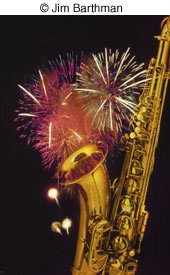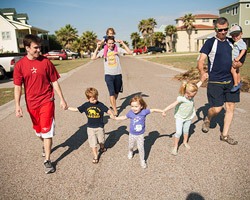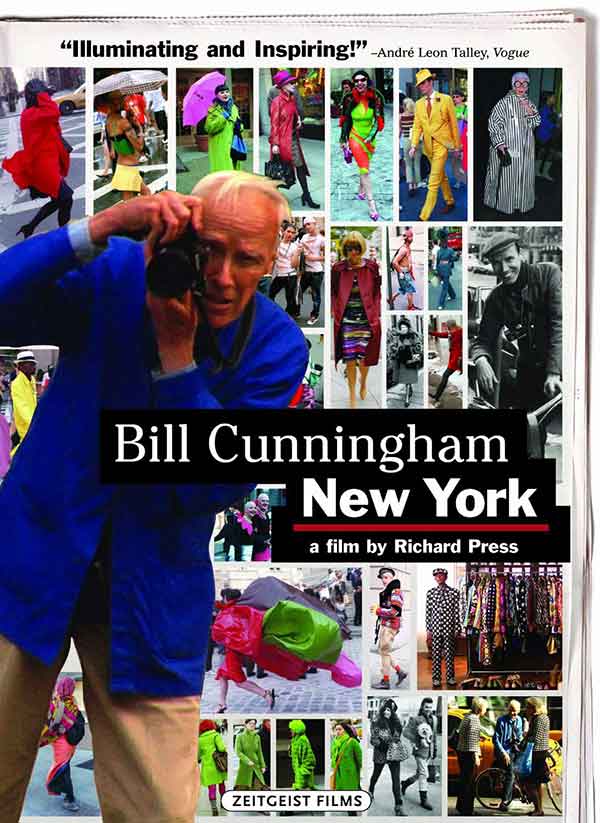Our main article on fireworks presumes you're in the audience of a large, expensive fireworks show. But there's another type of firework display that you may be able to photograph — the one that takes place in your backyard or your neighbor's. Let us point out right now, that in virtually every paragraph of this article, we will repeat cautions about the need for extreme safety around fireworks, and the need for adults to be responsible for all backyard firework displays.
The fireworks that are launched by professionals — who, by the way, are called pyrotechnicians — are classified as Display Fireworks, and are sometimes known as "Class B" fireworks. How to photograph display fireworks is the subject of the main article in our Fourth of July Special Report. Chances are you'll never come too close to Display Fireworks, but you may well encounter Consumer Fireworks (also known as "Class C" fireworks). These are the fireworks you can purchase at roadside stands in many parts of the country.
Consumer Fireworks Are Readily Available
According to records compiled by the American Pyrotechnics Association, only 4 states (Delaware, Massachusetts, New Jersey and New York) completely ban consumer fireworks. Of the other 46, 6 allow only sparklers or novelty items (Arizona, Illinois, Iowa, Maine, Ohio, and Vermont). Bear in mind that within each state, local counties or cities may have more restrictive laws. Researching this article, we found two very good Web sites — www.pyrouniverse.com created by a fireworks enthusiast, and www.americanpyro.com, the official site of the American Pyrotechnics Association, the trade association for fireworks that has been around since 1948. You can find out the applicable statewide laws for your state, and lots more about fireworks, their history, and important safety tips by visiting these two sites.
We're not sure of the precise definitions of "novelties" or "safe and sane" fireworks. But we do know that no fireworks are "safe" unless they're used "sanely." We're certainly not advocating the use of fireworks that are not legal in your area.
Note: We also must point out that large explosive fireworks — so-called cherry bombs, M-80s and the like — have been outlawed by Federal Law for over thirty years. These are not fireworks. They are explosives and should not be used by individuals under any circumstances.
So, unless you're in one of the four states that completely ban consumer fireworks, and if you are going to enjoy backyard fireworks show this 4th of July, and as long as the show is conducted by safety-conscious adults — you can take several different types of cool fireworks pictures. Let's look at each.
Sparkler Art
Even the most restrictive states allow sparklers. These are usually thin metal rods coated with a combination of fuel, an oxidizer, and powdered metal — usually iron, steel, or aluminum — that creates the sparks, and a binder to hold all this stuff onto the rod. Sparklers produce a continuously burning trail of bright yellow or colored sparks. Since the burn time of a sparkler may be 30 seconds or more, this gives us the opportunity to do what photographers call "painting with light." This makes for some very cool fireworks pictures.
Painting with light is usually done with a flashlight or some other movable light source. In that case, unless it's pointed at the camera, the light source itself isn't usually visible; it is only used to illuminate the subject. With sparklers, the light source becomes part of the subject matter as well.
Before we get to our "How To" tips, let us interject a safety note — sparklers, while they are widely available, are among the leading causes of fireworks injuries. Perhaps that is in part because they are so widely available, that they lead the list. Typically, the danger to avoid is burns from a sparkler while it is sparkling, or from the super hot metal rod that remains after the sparkler has burned out. As Colin Bradley, the author of www.pyrouniverse.com so eloquently puts it: "I don't get why... anyone would hand their toddler a 1000-degree rod of burning hot metal in the first place. Think about it... Would you let your kid play with a stove? A clothes iron? A blowtorch? Of course not. As with any other consumer product, if someone uses it THE WRONG WAY, they'll get hurt."
Fireworks Pictures
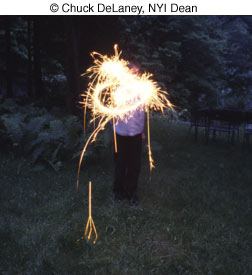
Let's look at some simple examples of sparkler photographs first.
Here we see a child twirling a sparkler. This picture was taken in late twilight — near darkness. The camera was mounted on a tripod to keep it steady during a long exposure, and auto focus was turned off. The child is asked to stay in one place and the photographer focuses on the child before the sparkler is lit. An adult lights the sparkler, and kids, doing what they do best, start to experiment.
If the child just moves the sparkler around in front of his/her face, as in the photograph on the right, the result is not too interesting. We see the trails of the burning sparkler, but the child's face has been obliterated.
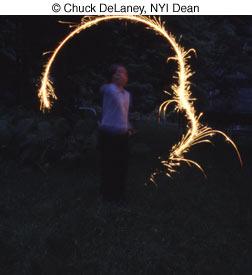
With a little direction, the child sweeps her arm to create an arc that fills more of the frame. As you can see, the child is watching the sparkler, so while the sparkler illuminates her face, it is blurred because she moved her head. With more experimentation, you can create a wide variety of effects. For example, you can write your name, or another word using the sparkler as a pen. However, this requires some thought because if you just spell out your name, it will appear backwards to the camera.
How to overcome this? The hard way is to write your name in mirror form. The easier trick is to turn your back to the camera and write your name the regular way, but if you do that, make sure to hold the sparkler high over your head, so that your body does not block any of the letters.
As with all photographs of this sort, the key is experimentation and taking several photographs to see which ones work out.
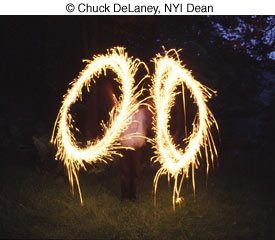
Here we've added a second sparkler and asked the subject to twirl both. These pictures were made using auto exposure. You can fine-tune the exposures and use manual settings if you prefer. As we've discussed, to make these fireworks pictures you need a tripod and someone to handle the sparkler. Now, if you can add another person to help, you can make a photo like this:
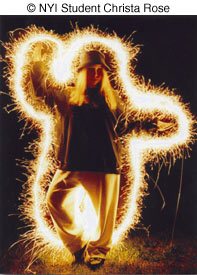
In this interesting photo, the woman that we see outlined by the sparkler is standing still. That's why she appears to be in sharp focus. The sparkler is being held by a third person who is standing behind the subject and who carefully outlines her torso. This was very precisely executed: the assistant moving the sparkler can't be seen at all. The illumination was made in a single pass, starting with the sparkler close to the ground, moving up to outline the figure and then back down the other leg to the ground. There was probably some additional burn time left on the sparker so the assistant held the sparkler close to the ground until it burned out. That would explain the very bright area we see between the subject's legs. During this entire period, the subject held her scarecrow-like pose.
Again, safety is very important here. That's why the assistant stands behind the subject and keeps the burning sparkler well away from the subject's body. Remember, safety when taking fireworks pictures is paramount.
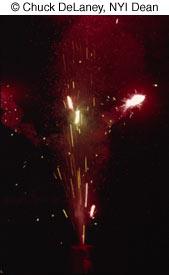 Photographs of Light Showers
Photographs of Light Showers
Other types of consumer fireworks, such as those that make small pops, like bottle rockets, or slender backyard Roman Candles will probably not make interesting-looking photographs. But the type of fountain display that is fired on the ground can provide some excellent opportunities for making very interesting pictures.
Once again, these photographs can be taken using automatic exposure with the camera mounted on a tripod. Keep at least 8 to 10 feet away from the shower and use your zoom to fill the frame with the colorful eruptions.
If you like, you can use your camera's pop-up flash to toss a little light on the scene.
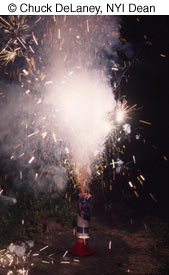
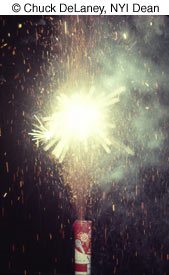
Here you can see two similar photographs, the one on the left was taken without using the on-camera flash; the one on the right was taken using the camera's flash. You can see the cardboard tube of the display is clearly visible on the right-hand photo.
These photographs are interesting to look at on their own, but they can also be used with the addition of type for party invitations, or combined with other images to make photo illustrations. For example, former NYI Student Advisor Jim Barthman combined some fireworks pictures with a saxophone to come up with this interesting image (below left.)
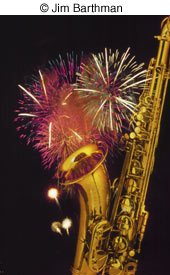
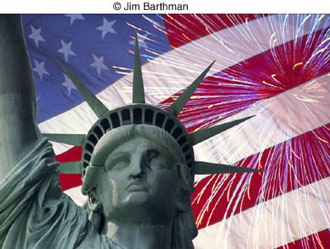
Here's another illustration (above right) that Jim created from three separate photographs.
Once you collect some interesting looking images, what you can create is limited only by your imagination.
Enjoy the Fourth of July, and if you take some beautiful fireworks pictures, don't hesitate to send it to us. Have a safe and sane holiday.
And, let us close as we began, with safety uppermost. To help you celebrate safely this Fourth of July, the Consumer Product Safety Commission and the National Council on Fireworks Safety offer the following safety tips:
- Always read and follow label directions
- Always have an adult present
- Only buy from reliable fireworks sellers
- Be sure to have water handy
- Never experiment or attempt to make your own fireworks
- Light only one at a time
- Never re-ignite malfunctioning fireworks
- Never give fireworks to small children
- Store fireworks in a cool, dry place
- Dispose of fireworks properly
- Never throw fireworks at another person
- Never carry fireworks in your pocket
- Never shoot fireworks in metal or glass containers
Have a safe and happy Fourth of July!
Learn more about photogrpahy at our online photography course

